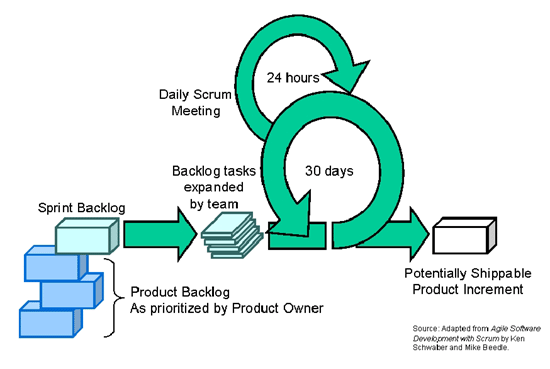Sprint retrospectives are an important tool for Agile software development teams that want to implement continuous improvement and adjustment to their working context. In this article, Jesus Mendez provides some techniques that could help improving the outcome of your Sprint retrospectives.
Author: Jesus Mendez, Certified Agile Coach, http://www.jesusmendez.ca/
What is the sprint retrospective about?
It is a very old ritual used by human beings as a vehicle to discover, share and pass along learning from experience, sometimes called “wisdom”. “A mechanism to look back or to move forward, something that every true learning organization has as part of its culture, and it’s one of the best ways to grow – project by project – into a smarter and increasingly successful organization”, “the collective telling of the story and mining the experience for wisdom” is how they refer to it.
When the sprint retrospective is held?
It’s meant to happen at the end of the sprint, once the sprint review is over. I prefer to keep it as a fixed event that occurs at the same time within the sprint, in order for it to become a habit for the team.
What’s the goal of the sprint retrospective?
The main goal of the sprint retrospective is to create wisdom within the team by reflecting on the experiences to learn and to continuously improve by getting better results as soon as possible.
What techniques could be used to get the best out of the sprint retrospective when forming an agile team?
Pause
I truly believe that when forming an agile team, we are forming leaders as well. That’s why creating the need for pause through sprint retrospectives, is an amazing way to install the pause principle within the team. As Kevin Cashman refers to it in his book “The Pause Principle: Step back to lead forward”, “The Pause principle is the conscious, intentional process of stepping back, within ourselves and outside of ourselves, to lead forward with greater authenticity, purpose, and contribution”. That’s what I’m looking for when forming an agile team, the team’s soul, their own voice, what is that unique thing that will make stakeholders invest resources in it; that special ingredient that makes it different, inspiring.
Be prepared and plan it
I’ve noticed that there is a big difference between a well-prepared retrospective and an improvised one. So please offer yourself and the team, the gift of being prepared in advance. By doing so, you will be sending several messages to the agile team:
* You’ve done your part, so you care about them.
* There is some kind of plan in your mind to help them continue improving.
* You respect them.
Share intentions
Once everyone is comfortably settled in the room and I sense people are ready to start, I wait in silence, with patience, for a clue that will show me that the team is ready to listen to what I intend to do with the agenda that I’m about to propose to them.
Validate your agenda before starting
Once your intentions have been shared, I would ask the team if there were another subject that should be discussed in priority. This question will open an opportunity to explore hidden subjects that could require immediate attention. It will also keep the retrospective agenda flexible and add points to the relationship of trust that has been built.
Breathe
Give yourself and the team a break to breathe and try as much as you can to do it together. Breathing is the process that moves air in and out of your body, it keeps organisms alive, and the team that we are forming here is a form of living organism, so let it breathe.
About the Author
Jesus Mendez a professional Scrum Master/Product Owner and Certified Agile Coach with 15 years of experience in IT projects, who nurtures from people’s interactions, passionate about helping Scrum Masters survive and thrive by connecting them to their most authentic self. He is the author of the workbook “Forming Agile teams” which presents you techniques for structuring and get sustainable Agile teams high-performance ready. Visit http://www.jesusmendez.ca/books/forming_agile_teams/.



Checkout the Six Thinking Hats method for effective retrospectives. It is amongst the favorites in my tool box :) …read about it here http://www.lostconsultants.com/2016/07/06/edward-de-bono-six-thinking-hats/